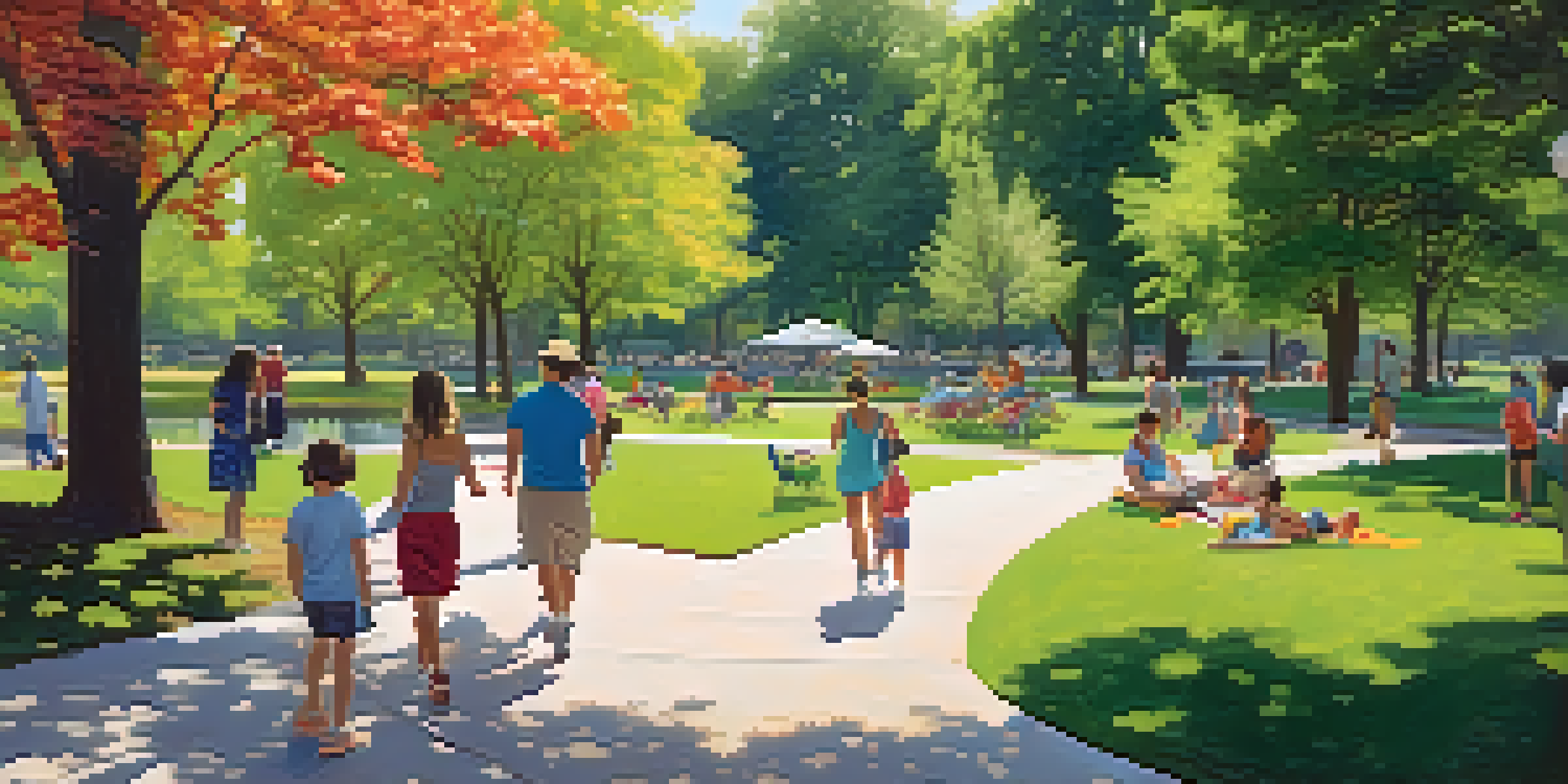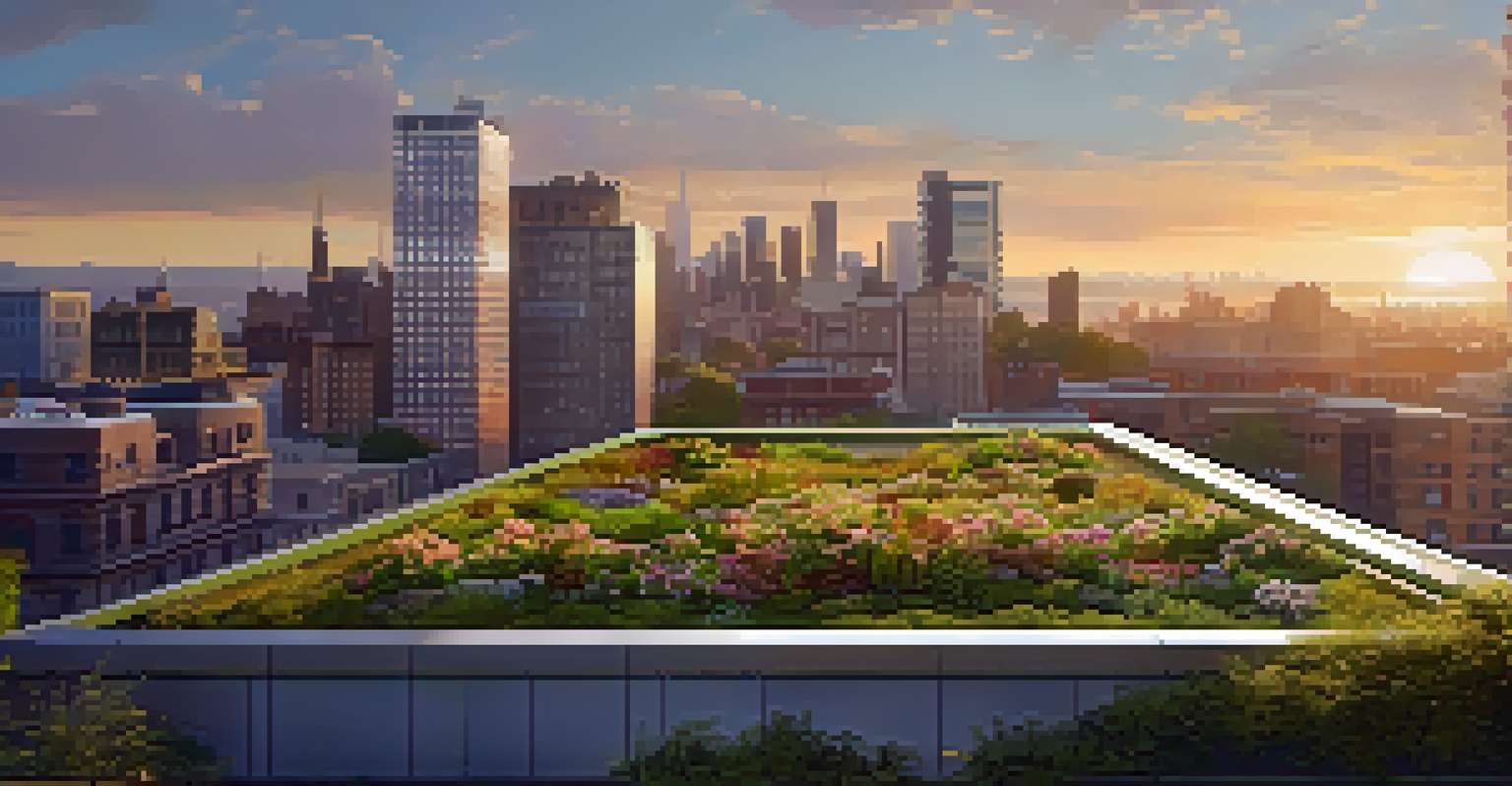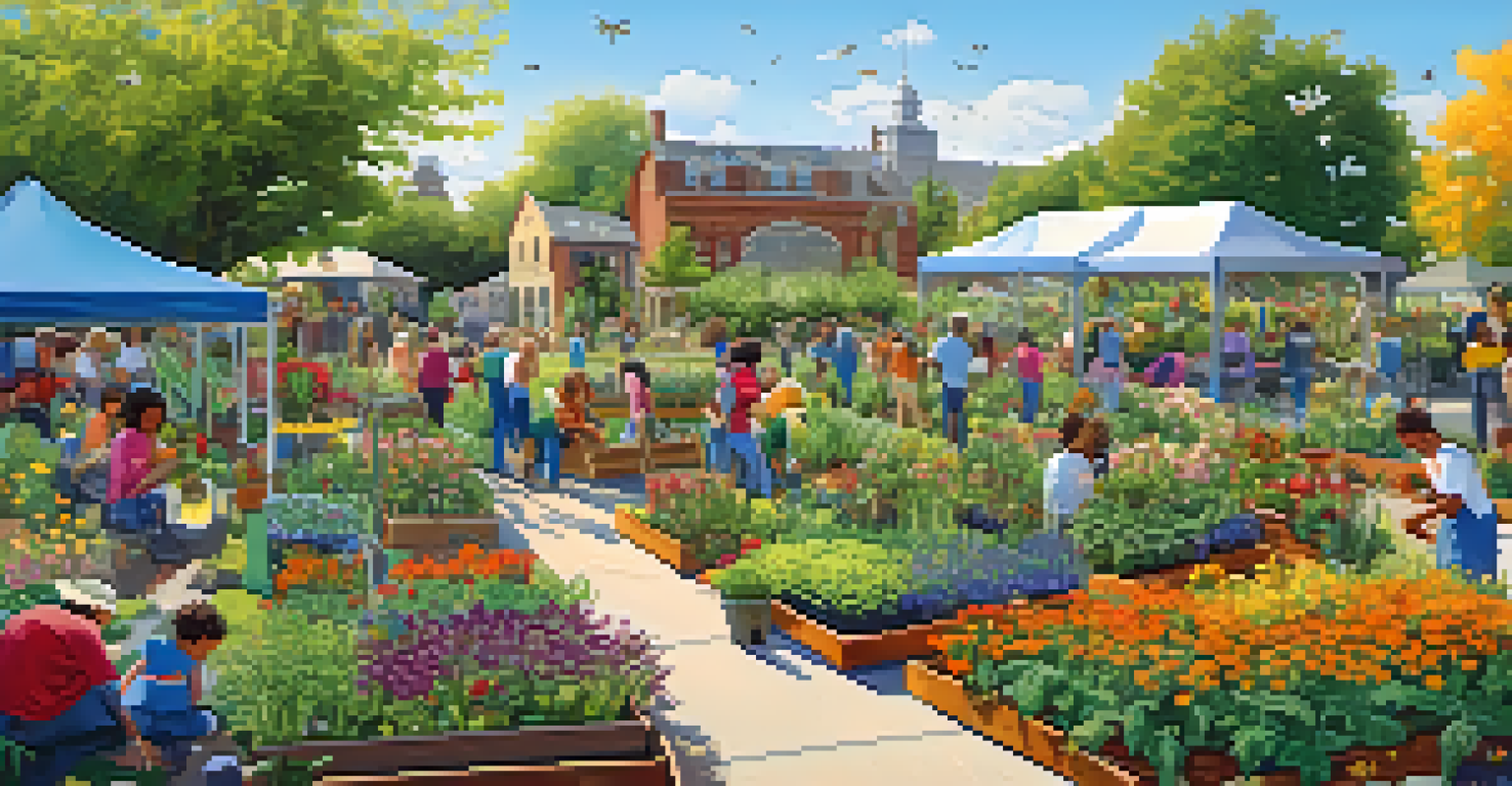Urban Green Spaces: Their Role in Carbon Sequestration

Understanding Urban Green Spaces and Their Importance
Urban green spaces, such as parks, gardens, and green roofs, are essential components of city landscapes. They serve as vital lungs for urban areas, providing fresh air and enhancing the quality of life for residents. These spaces not only offer recreational opportunities but also play a crucial role in environmental sustainability.
The best time to plant a tree was twenty years ago. The second best time is now.
As cities continue to grow, the importance of incorporating greenery cannot be overstated. They help mitigate the heat island effect, where urban areas become significantly warmer than their rural counterparts. This cooling effect can lead to reduced energy consumption and lower greenhouse gas emissions, making cities more livable.
Moreover, urban green spaces foster biodiversity by providing habitats for various species. In a world where wildlife is increasingly threatened, these areas serve as crucial refuges, supporting ecosystems that contribute to the overall health of our planet.
The Science Behind Carbon Sequestration
Carbon sequestration refers to the process of capturing and storing atmospheric carbon dioxide (CO2). Plants absorb CO2 during photosynthesis, converting it into oxygen and organic matter, thus playing a pivotal role in reducing greenhouse gases. This natural mechanism is essential in the fight against climate change.

In urban settings, trees and plants act as carbon sinks, meaning they store more carbon than they release. A single mature tree can absorb approximately 48 pounds of CO2 annually. When we plant more trees and enhance green spaces, we amplify this positive impact on our atmosphere.
Green Spaces Boost Urban Life
Urban green spaces enhance air quality, support biodiversity, and provide recreational opportunities for city residents.
Additionally, different plant species sequester varying amounts of carbon. For instance, larger trees typically store more carbon than smaller plants. Therefore, urban planning that prioritizes diverse and strategically placed greenery can significantly enhance carbon capture in cities.
The Role of Trees in Carbon Sequestration
Trees are the heavyweight champions of carbon sequestration. With their expansive root systems and towering canopies, they capture and store large amounts of CO2. In urban environments, where concrete and asphalt dominate, trees provide a necessary counterbalance by absorbing carbon and releasing oxygen.
Nature does not hurry, yet everything is accomplished.
Moreover, the age and health of a tree significantly influence its carbon storage capacity. Older trees store more carbon due to their larger biomass. Therefore, protecting existing trees and planting new ones is essential for maximizing carbon sequestration efforts in cities.
Community involvement in tree planting initiatives can also foster a sense of ownership and responsibility towards urban green spaces. Engaging residents in these efforts can lead to a culture that values and protects these essential resources.
Green Roofs and Walls: Innovative Urban Solutions
Green roofs and walls are innovative solutions that enhance urban green spaces while maximizing limited land. These structures are covered with vegetation, which not only beautifies the skyline but also contributes significantly to carbon sequestration. By integrating nature into buildings, cities can reduce their carbon footprint.
Additionally, green roofs help to insulate buildings, leading to lower energy costs and reduced emissions. They also capture rainwater, reducing stormwater runoff and minimizing the risk of flooding in urban areas. This multipurpose functionality makes green roofs a win-win for both the environment and urban dwellers.
Trees are Vital Carbon Sinks
Mature trees significantly contribute to carbon sequestration, making their preservation and planting essential in urban areas.
Furthermore, as these living walls and roofs mature, they continue to sequester more carbon over time. Implementing such designs in urban planning can lead to more sustainable and resilient cities.
Community Gardens: Cultivating Carbon Capture and Community Spirit
Community gardens are more than just a source of fresh produce; they are vital urban green spaces that contribute to carbon sequestration. By cultivating a variety of plants, these gardens absorb CO2 while promoting local food production and community engagement. They transform vacant lots into thriving ecosystems.
Gardening not only helps in carbon capture but also fosters social interaction among neighbors. These spaces encourage collaboration, education, and a shared sense of purpose, bringing people together to work towards a common goal: sustainability.
Moreover, community gardens can serve as educational hubs, teaching residents about the importance of biodiversity and environmental stewardship. By involving local communities, we can create a collective effort in combating climate change and enhancing urban biodiversity.
Biodiversity and Its Connection to Carbon Sequestration
Biodiversity plays a crucial role in the effectiveness of carbon sequestration in urban green spaces. A diverse range of plant species ensures a resilient ecosystem capable of adapting to environmental changes. This resilience is vital as climate change continues to pose challenges to urban environments.
Different plants have varying abilities to sequester carbon, and biodiversity enhances the overall capacity of urban green spaces. By incorporating a mix of trees, shrubs, and ground cover, cities can optimize their carbon capture potential while supporting a healthy ecosystem.
Community Gardens Foster Engagement
Community gardens not only capture CO2 but also promote local food production and strengthen neighborhood ties.
Furthermore, diverse ecosystems attract various wildlife species, which contribute to pollination and other essential ecological processes. This interconnectedness highlights the importance of preserving and enhancing biodiversity in urban areas.
The Future of Urban Green Spaces in Climate Action
As climate change continues to escalate, the role of urban green spaces in carbon sequestration will become increasingly vital. Cities around the world are recognizing the importance of integrating nature into urban planning to combat rising temperatures and CO2 levels. This shift towards greener cities is essential for sustainable development.
Investments in urban green initiatives not only improve air quality but also enhance the overall well-being of residents. Moreover, they can have significant economic benefits, such as increased property values and reduced healthcare costs associated with pollution-related illnesses.

Looking ahead, the collaboration between government, community organizations, and residents will be crucial in expanding urban green spaces. Together, we can create a greener, healthier future that prioritizes carbon sequestration and fosters vibrant communities.